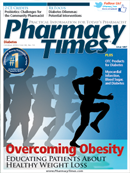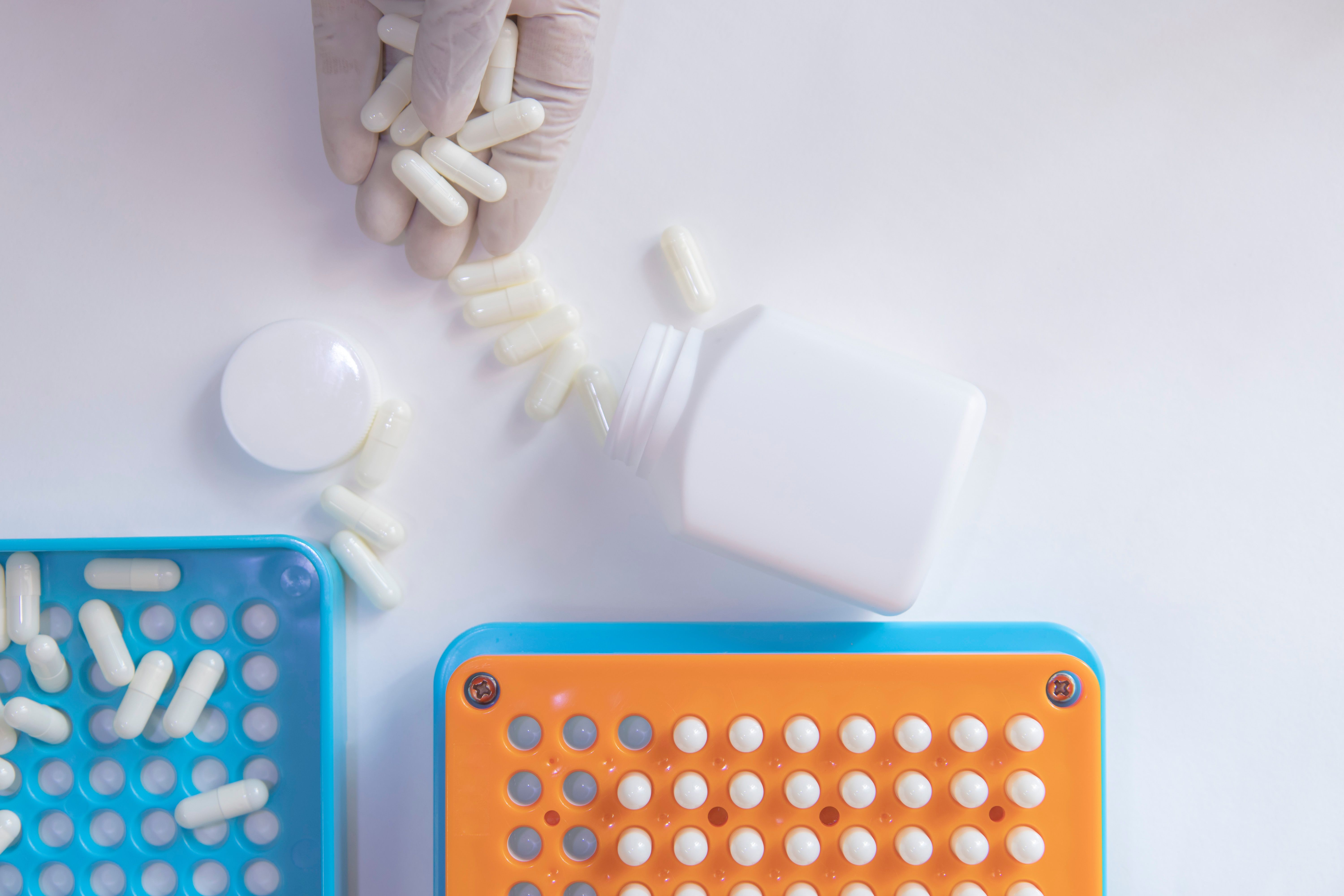Publication
Article
Pharmacy Times
Self-Care for Diabetes
Case 1: Foot Care
BP is a 54-year-old male with a 5-year history of type 2 diabetes mellitus (T2DM) who comes to your pharmacy seeking a foot soak. BP believes he is experiencing an ingrown toenail that started 3 days ago after he stubbed his toe at home. He would like you to recommend a remedy for the foot lesion and for pain relief. He refuses to remove his shoe because of the pain, but he reports that the big toe on his right foot is red and inflamed and that he has some blood and pus on the toe of his sock. He describes the pain as a 7 on a scale of 10. You notice he is favoring the opposite foot and leg when he walks. Along with diabetes, BP has a history of hypertension, dyslipidemia, and benign prostatic hyperplasia, for which he takes amlodipine/benaze- pril, atorvastatin, and tamsulosin/finasteride, respectively. What recommendations can you give to BP?
Answer
Foot care is critical to self-care for patients with T2DM and is essential for minimizing complications associated with neuropathy and infection. It is prudent at every opportunity to remind these patients to inspect their feet daily and note any changes. Reiterate the importance of wearing shoes and keeping the feet covered, especially while outdoors, and urge patients to have an annual diabetes foot exam with a podiatrist.1 Further, cleansing and carefully moisturizing the feet daily are essential to self-care.1 If your pharmacy offers a diabetes care clinic, visually inspecting patients’ feet at each visit or examining their tactile sensation can also help to detect and manage complications associated with neuropathy.
BP requires referral to a primary care provider for evaluation and examination of his toe because infection is a primary concern. For general first aid, you can remind him to clean the wound with warm soap and water and cover it with a clean dressing until the foot can be examined. For analgesia, recommend that BP take a nonsteroidal anti-inflammatory drug with food and water to mitigate side effects.
Case 2: Herbal Supplements for Lowering Glycated Hemoglobin Levels
LN is a 64-year-old female who would like information about taking a garlic supplement to help her lower her glycated hemoglobin (A1C) value and better control her T2DM. LN’s T2DM was diagnosed 15 years ago and is controlled with metformin 1000 mg twice daily and with insulin glargine 45 U once daily in the evening. Her most recent A1C value was 8.7% despite adherence to her recommended diet and medications, so she is considering taking a natural alternative rather than taking rapid-acting insulin with each meal. She remembers reading about the beneficial effects of garlic supplementation for controlling blood sugar and would like to know your thoughts on it. How would you respond?
Answer
Garlic has been used as a medicinal herb for thousands of years. It has been touted as a treatment for hypertension, diarrhea, menstrual disorders, warts and corns, and myriad other conditions; garlic has also been reported to help control blood glucose levels.2 Garlic supplements are derived from the bulb of the plant or consumed from dietary sources in an attempt to achieve the desired therapeutic effect of the allicin component, which may have anti-inflammatory, antiplatelet, and anti-infective properties, among other potentially therapeutic effects.3 While the literature supports taking daily doses of 300 to 400 mg to reduce the risk for atherosclerosis and to lower blood pressure, not enough data are available to warrant recommending garlic to LN to help her control her blood glucose level.2 A prudent first step toward helping her achieve her A1C goal is to thoroughly review her diet and lifestyle behaviors and to recommend daily exercise, proper intake of fiber and carbohydrate, limited alcohol consumption, and adherence to medication. Remind her that numerous oral therapeutic agents are available that may help to lower her blood sugar level and that she should discuss alternatives to rapid-acting insulin with her physician.
Case 3: Hypoglycemia
EW is a 79-year-old man who wants a pharmacist’s opinion on adjusting his diabetes care regimen. Over the past few days, after suffering from a bothersome gastrointestinal illness, EW has felt more tremulous than usual and has had heart palpitations, which he hasn’t had before. He has been self-monitoring his blood glucose values more frequently at home, noticing that his fingerstick values are 70 to 80 mg/dL rather than the usual 140 to 149 mg/dL. On occasion, he has had values of 60 to 69 mg/dL, which prompt him to drink orange juice to correct the value. EW takes a combination tablet that includes glyburide 5 mg and metformin 500 mg. He has been taking 2 tablets twice daily for several years. His other medications include hydrochlorothiazide 25 mg once daily, and pravastatin 40 mg once daily. EW has no known allergies. What advice can you give him?
Answer
EW is likely suffering from hypoglycemia, which can be attributed to his acute gastrointestinal illness coupled with taking his sulfonylurea antidiabetic agent. According to the Beers’ List, sulfonylurea agents (glyburide in particular) should be used with caution in elderly patients due to the prolonged half-life of the medication, the reliance on renal function to clear the medication, and the potential for the medication to cause prolonged hypoglycemia.4 Without knowing more about EW’s renal function, blood glucose control, or A1C level, it is difficult to determine which alternative class of agents might be best suited for him. Prompting him to discuss this with his primary care provider would be an appropriate initial step to help him avoid potential complications. Remind him of the symptoms of hypoglycemia (eg, diaphoresis, tremulousness, palpitations, dizziness) and to keep a source of glucose handy in case he experiences these symptoms in the future.
Case 4: Gestational Diabetes and Vaccine Needs
CL is a 32-year-old female who is 6 months pregnant with her second child. At her recent obstetrician/gynecologist (OB/GYN) appointment, she was given a diagnosis of gestational diabetes and received (1) instruction on self-monitoring her blood glucose value each morning and after every meal and (2) nutrition counseling on carbohydrate counting. She comes to the pharmacy to receive her influenza vaccination at the recommendation of her OB/GYN and also inquires whether she is a candidate for other vaccinations she has seen advertised for treating diabetes. What information and vaccination recommendations can you give to CL?
Answer:
Vaccinations are an important aspect of self-care that all patients with diabetes should consider. The Advisory Committee on Immunization Practices recommends that patients with diabetes receive vaccinations for the following: influenza (annually), Tdap (tetanus, diphtheria, pertussis; one time with a Td [tetanus, diphtheria] booster every 10 years), human papilloma virus, varicella, zoster (depending on an individual’s age), pneumococcus (polysaccharide 23-valent), and hepatitis B.5 However, for CL’s gestational diabetes does not require the same vaccination schedule as that for patients with type 1 diabetes mellitus or T2DM. CL’s pregnancy warrants special consideration for immunization needs and avoidance of certain vaccinations recommended for other patients with diabetes. Based solely on her age and pregnancy status, CL should receive 1 dose of the inactive influenza vaccine and 1 dose of the Tdap vaccine between weeks 27 and 36 of gestation, regardless of when she previously received the Td or Tdap vaccination.5
Dr. Bridgeman is clinical assistant professor at Ernest Mario School of Pharmacy, Rutgers University, and internal medicine clinical pharmacist at Robert Wood Johnson University Hospital in New Brunswick, New Jersey. Dr. Mansukhani is clinical assistant professor at Ernest Mario School of Pharmacy, Rutgers University, and transitions of care clinical pharmacist at Morristown Medical Center in Morristown, New Jersey.
References
- Ulbrich TR, Krinsky DL. Self-Care components of selected chronic disorders. In: Krinsky DL, Berardi RR, Ferreri SP, et al (eds). Handbook of Nonprescription Drugs: An Interactive Approach to Self-Care. 17th ed. Washington, DC: American Pharmacists Association; 2011.
- Garlic. Natural Medicines Comprehensive Database. www.therapeuticresearch.net. Accessed September 15, 2014.
- Fetrow CW, Avila JR. Professional’s Handbook of Complementary & Alternative Medicines. Philadelphia, PA: Lippincott Williams & Wilkins; 2004:342-349.
- The American Geriatrics Society 2012 Beers Criteria Update Expert Panel (2012). American Geriatrics Society Updated Beers Criteria for Potentially Inappropriate Medication Use in Older Adults. J Am Geriatr Soc. 2012;60:616-631. doi:10.1111/j.1532-5415.2012.03923.x.
- Recommended adult immunization schedule—United States, 2014. CDC website. www.cdc.gov/vaccines/schedules/hcp/adult.html#mmwr. Accessed August 15, 2014. Accessed September 15, 2014.







